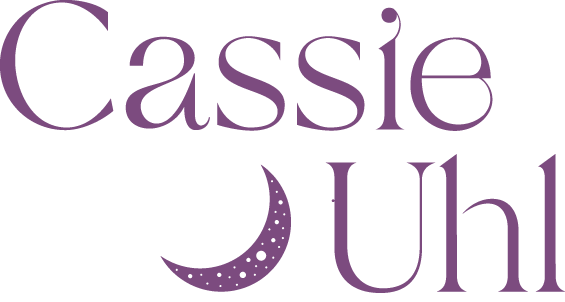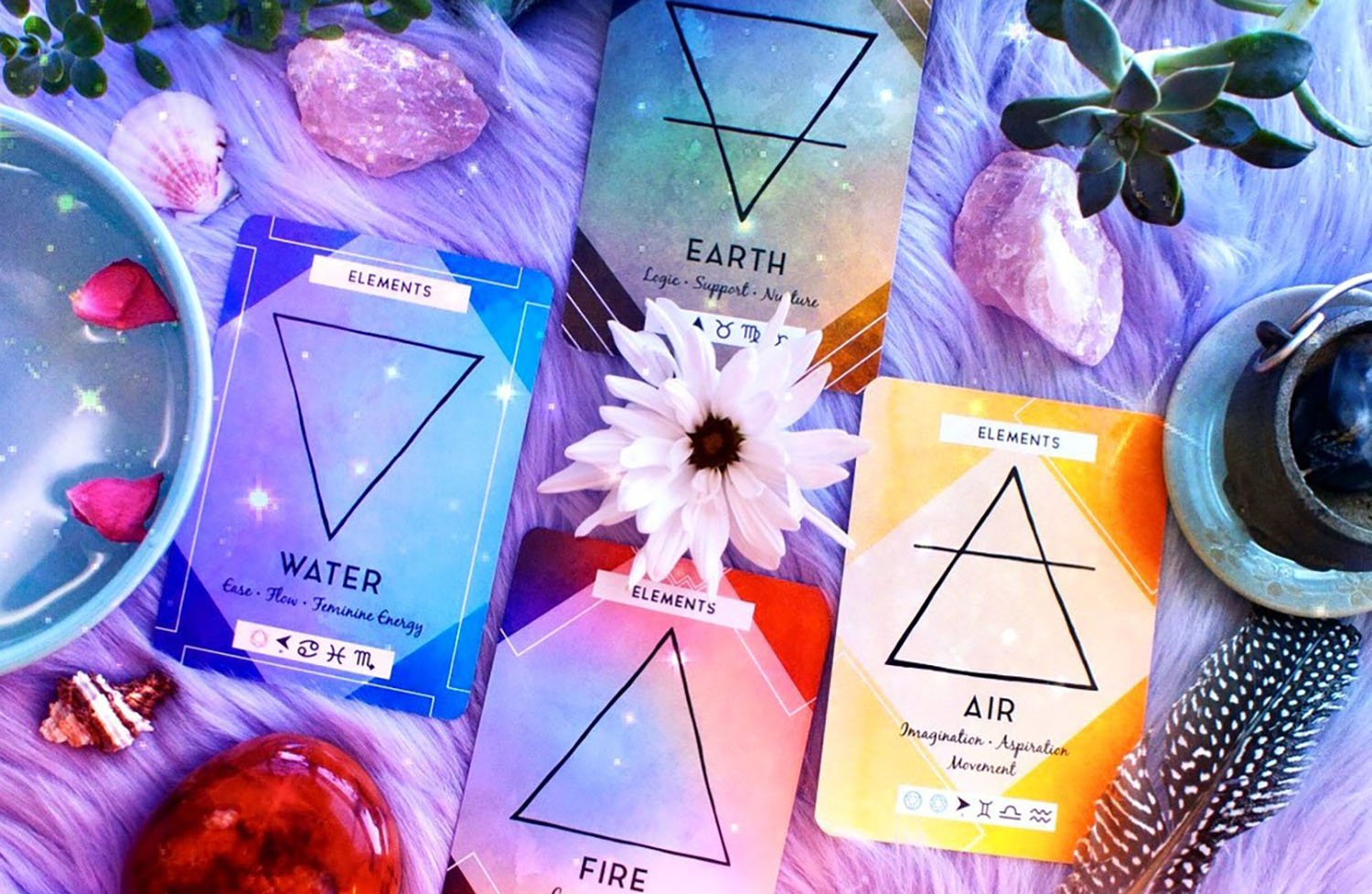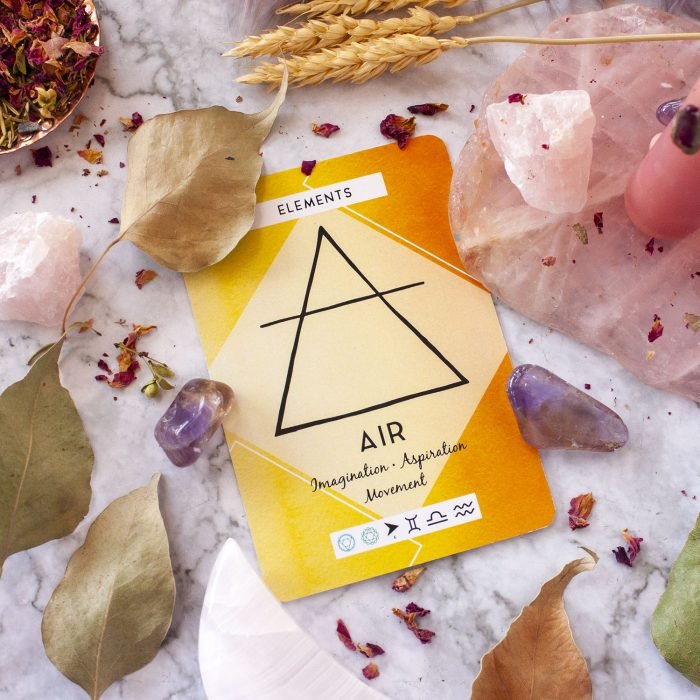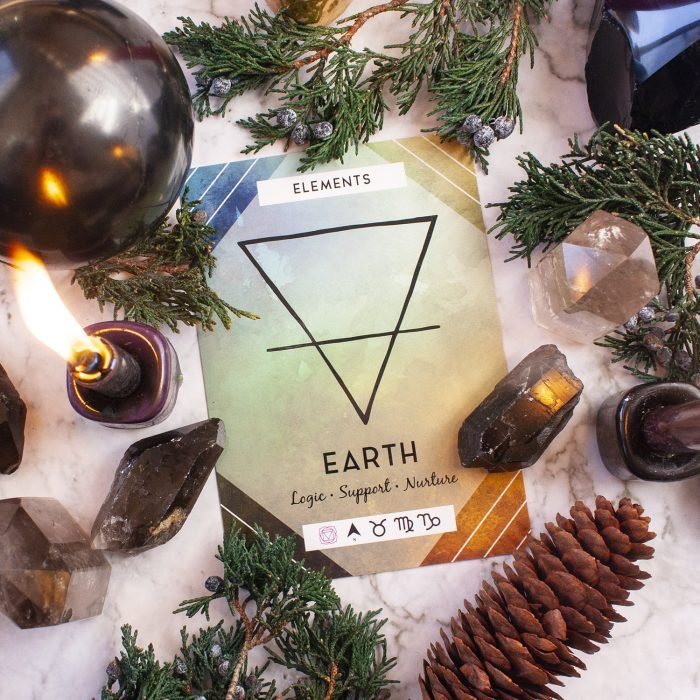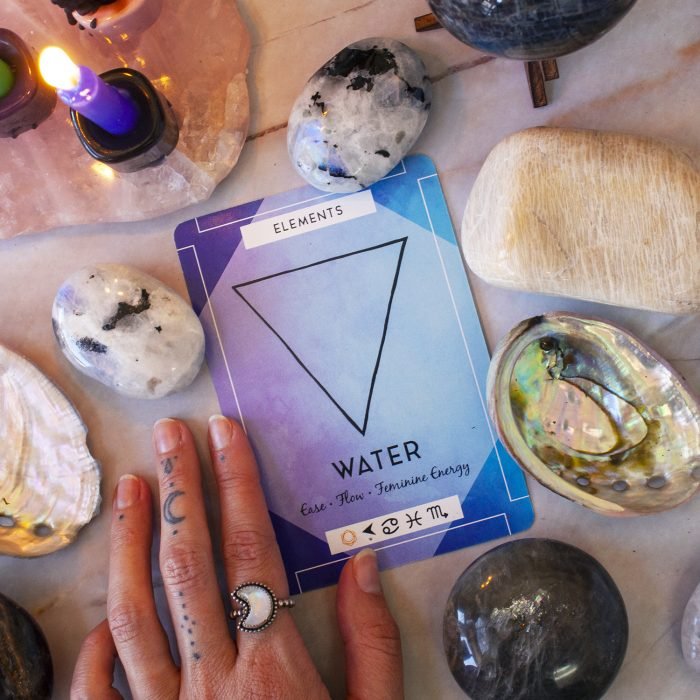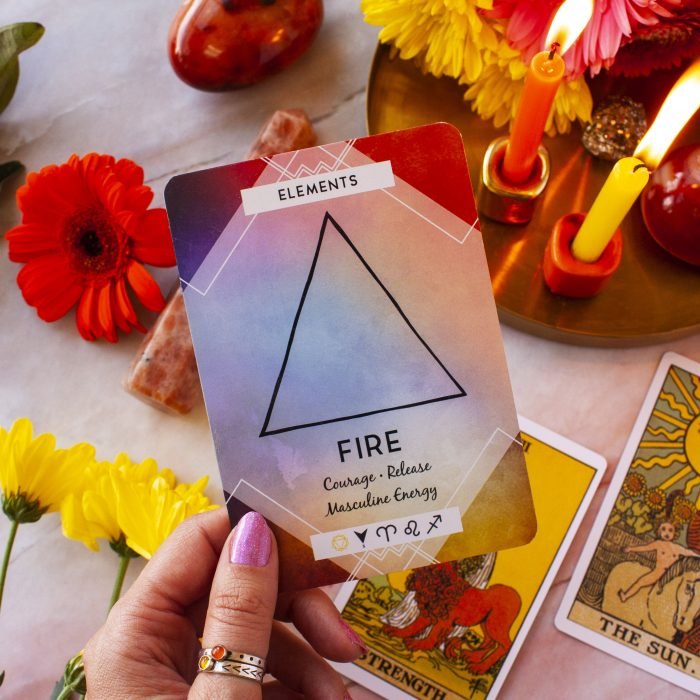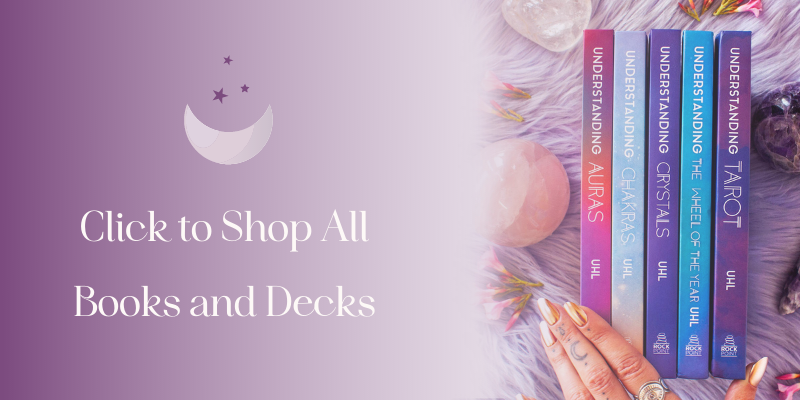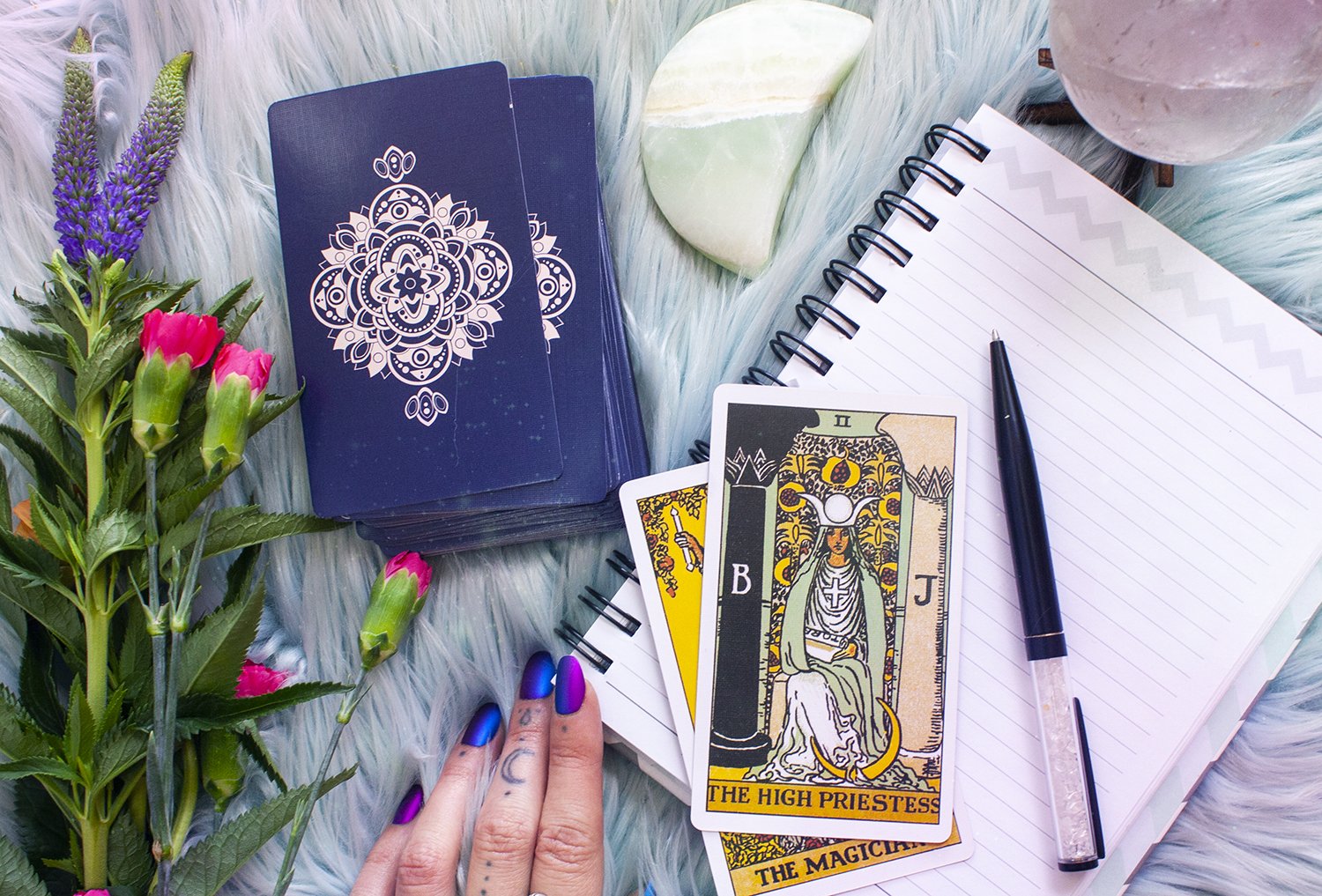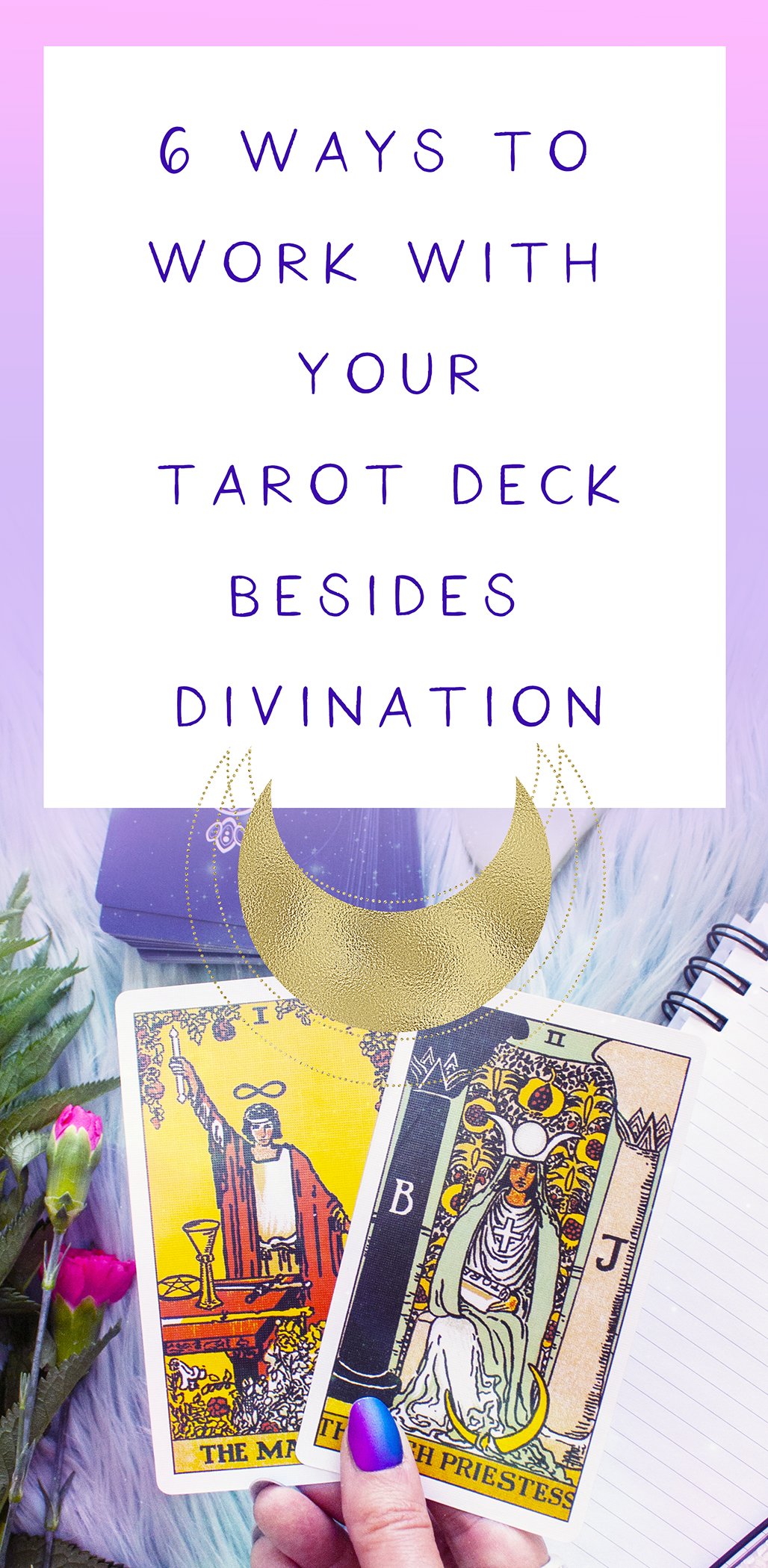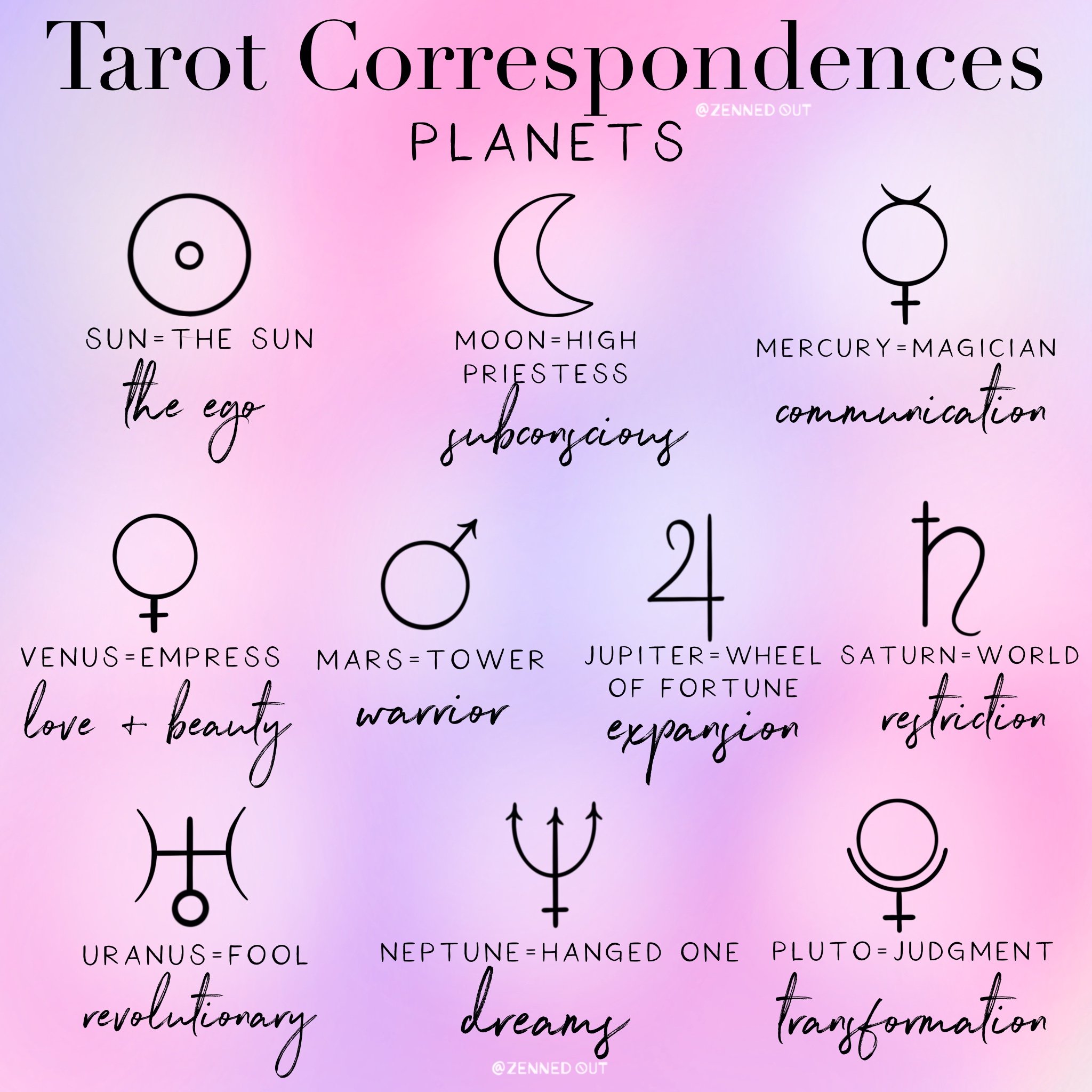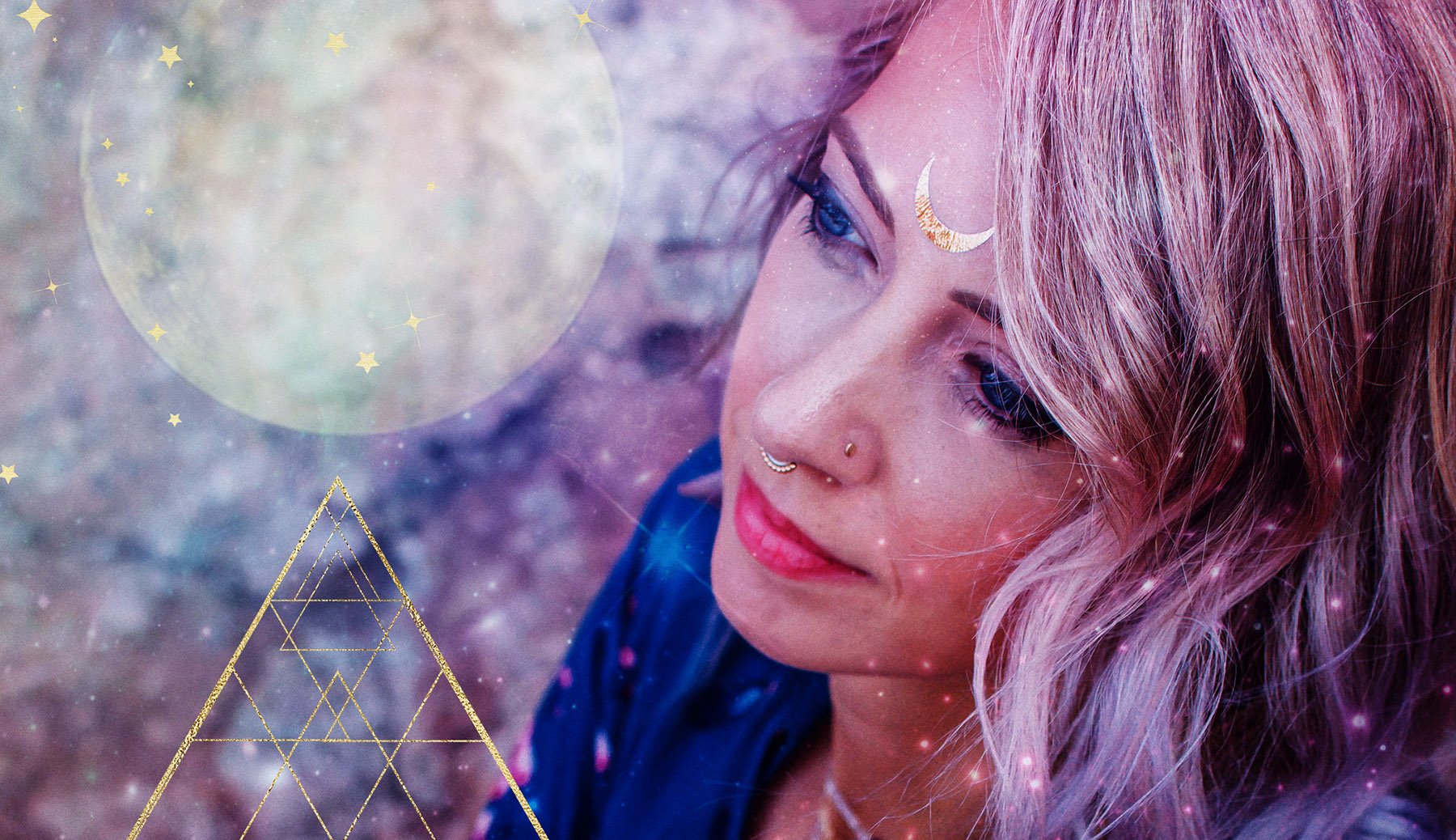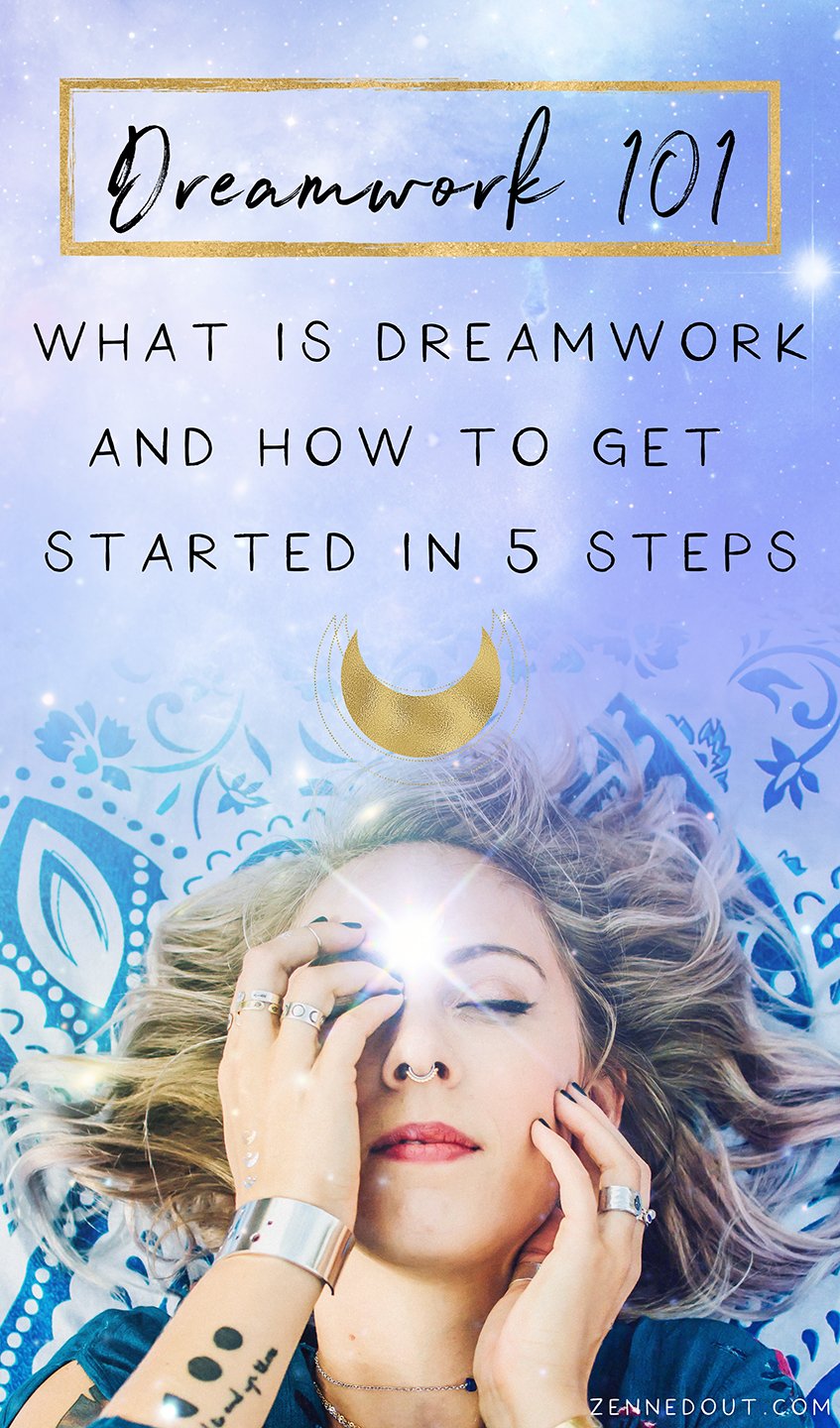Understanding the 4 Elements & Using them to Shift Your Energy
The four elements, earth, air, fire, and water, are physical materials and energies that comprise the world around us. If you don't already work with the four elements in your practice, you've likely heard of them because they're rather tricky to avoid as so many spiritual practices refer to them in some way.
The four elements, earth, air, fire, and water, are physical materials and energies that comprise the world around us. If you don't already work with the four elements in your practice, you've likely heard of them because they're rather tricky to avoid as so many spiritual practices refer to them in some way.
There are countless ways to deepen your relationship with the four elements and bring them into your practice. In this post, you'll learn a bit about the history of the four elements, common correspondences for them, how to work with them physically and energetically, calling them in for protection, and using them in your home or on your altar.
I want to quickly touch on the element of Spirit because I'm sure some of you may be wondering if I'll discuss it as well! I will touch on the fifth element, often referred to as Spirit, aether, or Akasha, especially in the history section. However, I will save a deeper dive into the fifth element of Spirit for a post of its own. Much of this share will be dedicated to the four elements as I see them as slightly separate from Spirit and very foundational.
Listen to this post on my podcast, Rooting into Wholeness here.
A brief view of history and the four elements
As usual, I do like to cover some history. I think it's an essential part of having a complete view of different spiritual practices. That said, I always research with an understanding that this history is rarely the whole picture, but rather one piece. This is especially true when you're reconstructing a spiritual path that's not clearly recorded, was attempted to be eradicated, or if you hold multiple cultural heritages (like many of us do!).
The deeper I dive into my spiritual roots, the clearer it becomes that building a meaningful practice combines historical facts, inference, oral traditions passed down, and personal experience. Each of these pieces, in my opinion, serves a useful purpose while building a spiritual practice. Here's a very brief history of some of the earliest mentions of the four elements.
One of the first written examples of the four elements comes from the Greek philosopher Empedocles in the fifth century BCE. Empedocles refers to them as the four roots and assigns each element or "root" to a Greek God or Goddess as follows, Hera with earth, Zeus with air, Aidoneus with fire, and Nestis with water (though there is some debate over this, this is the consensus.) The Gods and Goddesses Empedocles associated with each element is less important (to me) than the fact that he did associate them with Gods and Goddesses. Because Empedocles gave these elements spiritual significance by corresponding each with a God or Goddess, it indicates that he viewed them as having a deeper meaning than mere elements on a periodic table.
In Buddhist practices, we see the first written mention of the four (sometimes five) elements in the Pali Canon in 29 BCE. However, these were recorded based on oral history that had been previously passed down for possibly hundreds of years. We also have Vedic texts that speak to the five elements, or Pancha Bhootas, in Hinduism. These were first recorded in the Taittirīya Upanishad is unknown, but some think it could have been even earlier than Empedocles and predate Buddhist practices at around 500-600 BCE. If you've studied practices that have become more commonplace in the West, like Yoga or Ayurveda, these are the elements referred to in these practices.
In all of these cases, I'm simply talking about the written records. I believe, as do others, that the four elements have been worked with and used by many pagan and indigenous practices long before the written evidence was created.
As far as Celtic practices, the four elements were likely not a part of their practice. The number three was sacred to the Celts, so the elements they honored were the land, sea, and sky, or earth, water, and air. In witchcraft and other earth-based practices, the four elements became much more commonplace with the introduction of Wicca in the 1970s, which relies heavily on the four elements (sometimes five.)
Explore The Soul Discovery Journal for more on the elements
There's certainly reference to working with the four elements in pagan, shamanic, and indigenous practices worldwide. However, many of these practices have been passed down orally.
Elen Sentier teaches and practices British Shamanism, or the "old ways," as she calls it, shares about the four elements concerning the world tree. She explains this below, in this excerpt from her book, Following the Deer Trods.
"The World Tree holds the vertical axis on which the three worlds spin (Upperworld, Middleworld, and Lowerworld.) The vertical axis is like the warp-threads in weaving; these are threads on which the pattern is woven. Middleworld holds the horizontal axis of the four elements. These are the weft threads that weave the pattern of life.
The four elements - earth, air, fire, water - are the weft-threads.
These two, the warp and the weft, are the basis of the duality which enables life to be."
This explanation from Elen Sentier is hardly the only reference to the four elements in earth-based spiritual practices. I'm confident that wherever your cultural roots lie, you will be able to find reference to three, four, or five elements there as well. This is where inference and personal experience come in. When we examine the written history, we have one piece of the puzzle; however, when we explore the personal experiences from those who've lived and experienced lines of knowledge passed down, we receive a different part of the puzzle. For example, even though I walk a Celtic and British path primarily, I choose to work with the four elements because they have been an integral part of my practice, through my introduction to them with Yogic philosophy but in my witchcraft and shamanic work as well.
As always, work with what speaks to you, your experiences, and your heritage. Perhaps you prefer to work with three, four, or five elements. There are seeds of truth and wisdom in all of them.
For this post, I will be focusing on the four elements through my unique lens of witchcraft and British earth-based spiritual practices. However, my introduction to the four elements was through my Yoga teacher training in 2012, which will color my unique lens.
The elements and correspondences
Each element has a unique essence, which carries both positive and shadow attributes. No element is positive or negative, but rather a conglomerate of different energies. For example, we can see the soft and gentle flame of a candle or a roaring forest fire. Each has value and purpose. Each element also relates to a host of other energies and objects, called correspondences. Correspondences are energies that match and play well together.
Once you understand how the four elements relate to other energies, it creates a strong foundation for understanding magical correspondences on a broader level. Explore an in depth exploration of the four directions and elements by journeying to them here.
Keep in mind. These are my beliefs based on my research and experiences. If something I share about an element doesn't fit into your practice or even goes directly against your practice, no worries, just leave it. As we already discussed in the history section, spiritual practices using the four elements span the globe, so differing opinions are bound to come about.
Air card from The Ritual Deck.
Let's go through each element and discuss some of the most common meanings and correspondences for them.
Air relates to intellect, ideas, inspiration, and the mind. It corresponds with the East, the color yellow, the suit of swords in the tarot, the throat and heart space, wind, sound, smoke, smells, feathers, birds, and unseeable forces that influence our minds. In astrology, the three air signs are Gemini, Libra, and Aquarius.
Fire relates to transformation, action, power, and the ego. It corresponds with the South, the color red, the suit of wands in the tarot, the solar plexus area, flames, heat, candles, the phoenix, dance, and the destructive forces that ultimately encourage new growth. In astrology, the three fire signs are Aries, Leo, and Sagittarius.
Water relates to emotions, intuition, feelings, and the subconscious mind. It corresponds with the West, the color blue, the suit of cups in the tarot, the sacral area, springs, the ocean, tears, shells, aquatic animals, things in a liquid state like melting wax, and the forces that move us to feel so we can cleanse and heal. In astrology, the three water signs are Cancer, Scorpio, and Pisces.
Earth relates to safety, protection, the material world, and the physical body. It corresponds with the North, the color green, the root space, dirt, trees, rocks, food, bones, ancestral wisdom, and the physical energies that support and sustain us. In astrology, the three earth signs are Taurus, Virgo, and Capricorn.
I discuss this a lot in my Tarot Correspondences course and my new book, Understanding Tarot. As you can see, once you have a firm understanding of each of the elements, it will help you better understand Astrology, Tarot, and a host of other magickal practices.
This is a peek into each element. We'll go deeper into each of these, their positive and shadow sides, different tools to connect with them, and wisdom from each in the following posts:
Let's move on to some ways to begin working with the four elements collectively.
Connecting with the elements in the physical and energy body
As Elen Sentier stated in the excerpt from her book above, the four elements are the "weft threads that weave the pattern of life." The four elements affect each of us physically and energetically here in physical form. We can feel them in the body and connect with them in the subtle body.
If you want to form a deeper relationship with the four elements, this is where I'd invite you to begin, connecting with them within your body. There are many ways to start doing this, and it will be an ongoing practice because our relationship with the elements is not fixed and is constantly evolving and growing.
Earth card from The Ritual Deck.
Here are three ways I've learned to deepen my relationship with the four elements.
1. Notice the elements in the natural world and when you do, notice how they make you feel. For example, When I go on my regular walking meditations outside, this is one way that I tune in to the environment and the elements. I notice how the sun's heat feels on my skin. I notice the wind and any sounds it may be creating in the trees. I notice any water (which here in the desert is usually just the dew on the grass leftover from sprinklers). I notice the supportive earth beneath my feet. You can even imagine this in your mind right now. What feelings come up within you when you think about a stream vs. a fire? Each brings a different energy that is palpable within my mind's eye.
2. Notice how the four elements come up within your physical body. When you experience different sensations in your body, can you associate them with a specific element? For example, I'm someone who becomes ungrounded and anxious easily. I know what anxiety and dysregulation in my nervous system feel like. My mind races, I get a tingling sensation in my neck, my hands and feet sometimes get tingly, and my breath becomes shorter and moves to the chest. These sensations can come up due to an event outside of me or me merely not making time to care for my body, mind, and Spirit.
For me, I recognize this as an overabundance of air. Air corresponds with the thinking mind, intellect, and ideas. When I'm stuck in my head, and it's literally pulling me out of my body, I know I need to ground and bring in more earth. If I find myself in this place, I make sure to do things that bring in more of the earth element, like getting outside and feeling the support of the earth below my feet, or perhaps I meditate and visualize a connection to the earth. This is why my regular walking meditation practice is so imperative for me. Of course, this is not a cure-all nor an excuse to not seek out professional help. I've also relied on therapy and medication for my anxiety at different times in my life, but I find that a daily practice such as this helps support me in different ways.
Can you bring to mind some common emotions or sensations in your body? Perhaps you lean towards too much earth and often feel sluggish, tired, or heavy? Or, too much water, and you find yourself overly emotional and often in a puddle of tears. Or too much fire, which could feel like a need to be forceful or constantly doing. As I mentioned, each element is neither good nor bad. They each have both positive and shadow sides to work with and recognize. It's in finding a balance between them that we can move towards more equilibrium.
Water card from The Ritual Deck.
3. There are also ways to work with the elements on an energetic level. This is great if you don't have access to elements you want to work with or do some healing work during meditation or journeying.
I rely heavily on the four elements while working alongside clients for energy work. I see each element as an ally or helping Spirit to aid in giving each client what they need for healing. Of course, there are so many ways to do this for yourself as well. Here are some ways that I've learned over the years to work with each element energetically.
For earth, one of my favorite grounding techniques is to imagine that beam of energy or even a root coming from the base of your spine and connecting with the energy of earth (you can do this outside for extra potent earth energy!) In energy work, I will often pull in earth and mud (energetically within my altered state of performing energy work) to place on top of people if their energy feels dysregulated or "buzzy."
For air, I visualize air blowing around me and through my body. When performing energy work, I will sometimes blow air into certain parts of the body to clear or bring in more air. I also work with feathers similarly.
For water, I love to visit and visualize sacred springs and work with the water for healing for myself or with my clients. Spring waters are one of the most common tools, next to earth, that I pour into parts of people's bodies to bring cleansing and healing.
For fire, I love dance, either physically or even visualizing it. I'll imagine certain issues or things being burned up within me. I'm cautious with fire for energy work as it's so intense, so it's something I don't often use unless someone is very low energy.
I encourage you to explore your relationship with each element through meditation or journey work to find ways to work with them that work for you.
I hope this gives you some guidance to begin working with the elements both physically and energetically. As I mentioned, I will dedicate a post to each of these elements to explore each one on a deeper level.
Spellwork and Protection with the Elements
The four elements are often used in both spellwork and protection. Let's discuss some ways to work with them in these ways. As we discussed, each element carries specific energy, and you can call upon those energies through the elements to better facilitate particular outcomes in spellwork.
Fire card from The Ritual Deck.
Here are examples for each element. If you are conducting a spell to bring in mental clarity, the element of air would be appropriate, and you may want to incorporate feathers or plants that blow in the wind to honor air. Fire is your friend, and candle spellwork would be ideal if you are conducting a spell to energize you or facilitate a transformation. If you are performing spellwork to connect with your intuitive mind, bring some water into your spell by implementing water, shells, or aquatic materials. If you're working on manifesting something physical into your life, call upon the element of earth by working with stones, crystals, or earth objects to help bring about material possession.
There are so many different items that correspond with each element, so you truly have a bounty of various tools when it comes to representing the elements in your spellwork. You could rely on different tarot cards, plants, crystals, Gods, Goddesses, etc., to bring in an element. If you're learning the correspondences for the elements, I designed my oracle card deck, The Ritual Deck, to be a learning tool specifically for this! Each card has a correspondence bar at the bottom that shows the corresponding element for each card/symbol. Beyond this deck, I also love "Llewellyn's Complete Correspondence Guide." It's a big book but one I think any witch or person who dabbles in spellwork should have!
When it comes to protection, I love working with the four elements! If you've ever had a session with me, you know that I begin each session with some drumming and invoke each of the four elements to create a sacred container for our work. I also do this mentally whenever I journey. In Wicca, this is often referred to as "Calling the Quarters." But, you certainly do not need to consider yourself a Wiccan to work with the elements in this way. Working with the elements in this way for protection is something we see in many earth-based and shamanic practices.
To work with the elements in this way for protection, you can call in each element aloud or in your mind. It's common to start at the East with air, and move clockwise around the directions, Fire of the South, Water of the West, and Earth of the North. I like to visualize each element swooping in to create a barrier around me as I work. You could also place a physical representation of each element around you in this same order.
In witchcraft, this is often referred to as casting a circle. However, there are many other ways to cast a circle, and you do not have to consider yourself a witch to use the elements in this way. The next time you feel like you need extra protection for spellwork, meditating, journeying, etc. I encourage you to try either of these techniques and notice how you feel.
Using the four elements on altars and living spaces
One of the most common ways people work the elements into their practice is through an altar. This is another tool that we can see across cultures and traditions. It's a widespread practice to represent all four elements present on an altar for balance, protection and to show gratitude for each of the elements. We've touched on this a bit, but I'll share here some suggestions for ways to represent each element on your altar.
Air: Feathers, images or sculptures of birds or flying insects, smoke, fans, herbs or plants that blow in the wind, any cards from the suit of swords in the tarot, the color yellow, labradorite, amethyst, musical instruments like singing bowls, chimes, rattles, drums, etc.
Fire: Candles, burning charcoal, burning herbs, incense, lava rocks, obsidian, yellow jasper, any cards from the suit of wands in the tarot, a wand, phallic symbols, symbols, or images of the God (could be any God you're comfortable with.)
Water: water, shells, images or sculptures of any aquatic animals, opal, moonstone, aquamarine, any cards from the suit of cups in the tarot, chalices, cauldrons, symbols of the Goddess (could be any Goddess you're comfortable with.)
Earth: stones, wood, plant material, living plants, herbs, symbols or sculptures of trees, petrified wood, the Greenman, Gaia (or any earth God or Goddess in your practice), any card from the suit of pentacles in the tarot, money, different metals.
Some unique items can serve as all four (or five) of the elements.
Smoke cleansing with a shell or chalice-shaped bowl can serve as a representation of all four elements. The shell or chalice shape represents water, the plant material represents earth, the burning herbs represent fire, and the smoke represents air.
Candles are another one. The flame represents fire, the smoke represents air, the wick represents earth, and the melting wax represents water. I'm sure there are others that I'm not aware of or familiar with!
You can modify these same suggestions for your altar to help balance the energy of your living space. For example, if you're going through a transition as a family unit, you may find it helpful to bring in some grounding elements to your home to offer you and your family a greater sense of safety and support. Alternatively, suppose you recently had a visitor in your home who left some unwelcome residual energy. In that case, you might benefit from bringing more of the air element through smoke cleansing, or simply opening the windows, to bring in an energetic fresh breeze, if you will.
As you can see, there are so many meaningful and important ways to work with the four elements in your spiritual practice!
I'd like to note one last thing, especially when discussing using items from the natural world, both physically and energetically, is to be reciprocal with these elemental energies. When you call on them, thank them for their assistance by taking a few quiet breaths and offering your thanks and gratitude. If you take items from nature, consider leaving an offering as a token of your appreciation. This can be simple, but it's important and can genuinely help you form a much deeper relationship with the elements and nature.
If you enjoyed this share, I invite you to share it with someone else who may enjoy it as well. I'm excited to do deep dives into each of the elements soon!
In love and gratitude, Cassie
The Second Harvest // Honoring the Autumn Equinox with Apples
We started our triplicity of harvests with Lughnasadh, and the harvest season continues with the Autumn Equinox. The Autumn Equinox is our sacred portal into the darker half of the year. The amount of sunlight and night we experience will be in equilibrium for a moment before darkness begins to rule each day and call us more deeply inward.In this share, we'll discuss the layered energies of the Autumn Equinox, a few ways to tune into and honor its energy, and some sacred correspondences, specifically apples.
We started our triplicity of harvests with Lughnasadh, and the harvest season continues with the Autumn Equinox. The Autumn Equinox is our sacred portal into the darker half of the year. The amount of sunlight and night we experience will be in equilibrium for a moment before darkness begins to rule each day and call us more deeply inward.
In this share, we'll discuss the layered energies of the Autumn Equinox, a few ways to tune into and honor its energy, and some sacred correspondences, specifically apples. I'd also like to discuss the name Mabon often associated with this season. Listen to this post on my podcast, Rooting into Wholeness, below.
Mabon is a common name associated with this season, and though there's nothing wrong with referring to this season as Mabon, which is one of the more manufactured names on the Wheel of the Year. Names that don't quite make sense on the Wheel of the Year aren't something new and are something I discuss in my new book, Understanding The Wheel of The Year, shop it here.
The Wheel of the Year itself, as a unified construct of seasonal celebrations, is a relatively modern compilation of celebrations from various people, not one specific culture. The name Mabon was assigned by Aiden Kelly, one of the collaborators of the modern construct of the Wheel of the Year. Mabon was a Welsh mythological figure who doesn't appear to have any real connection to the Autumn Equinox. Some believe Aiden simply wanted another short name to associate with this season and, Mabon was the best he could come up with. We may never know! That said, Mabon is a common name associated with this season by many Wiccans. If it resonates with you, use it. If it doesn't, referring to this season as the Autumn Equinox is fine too. As with all of our seasonal celebrations, this is a time to honor and connect with the earth, not quibble over names.
A Balance of Light and Dark
There are so many beautiful energies layered into this season. This phase brings us more deeply into the waning side of the year by corresponding with the last quarter moon (a moon of equal light and dark, another visual of the balance this season brings about.) We also shift from Virgo to Libra season at this time. The sign of Libra, of course, being the scales mirroring this theme of balance again.
Beyond the energetics, the equinoxes spur extreme physical changes as well. The sunlight no longer reigns supreme throughout our day. The plant and animal world take note, and things start to shift and change all around and within us. These physical changes can bring a heightened sense of balance and change for everyone.
The full moon closest to the Equinox, which we experienced earlier this week, is the harvest moon. It wasn't uncommon for our ancestors to work all through the night in the fields harvesting crops in preparation for the winter ahead during the harvest moon. It's also fitting that our full harvest moon happened in the sign of Pisces (the end of the zodiac year) as we fully step into the darker half of the year.
As with any harvest, themes of abundance and gratitude surface. What always comes up for me around these themes is the idea of equal reciprocity. Equal reciprocity is always important, but with this season being one of balance, it can be a healing theme to explore. So, as you assess the abundance in your life, can you make space also to explore equal reciprocity? If you have an abundance of food, can you find a way to give back to the earth or those who need more food? If you have an abundance of time, how could you use it to serve yourself and others best? Alternatively, if you find yourself lacking in a specific area, could you ask for more of what you need? These questions can be applied to all facets of your life. I'll touch on this more when we talk correspondences because I have a perfect tarot card for this season.
A final theme that runs through this season is wholeness. Anytime we strive towards balance, we're moving into more wholeness. It's a time to take stock, shed what's no longer serving, and call in what you'd like to see more of in your life. We see this theme reflected perfectly in the apple, which brings me to our first ritual for this season.
Apple Rituals for the Autumn Equinox
I will be focusing solely on apples for this ritual section! Why apples? Apples tend to ripen around this season and are a potent symbol of abundance, gratitude, and wholeness. Apples are associated with the underworld connecting them with moving into the darker part of the year. There's no shortage of myths and folklore from the Celts, Druids, and other Euro-pagans about apples, apple trees, and their spiritual significance. The island of Avalon translates to the "Island of Apples." Apples are viewed as sacred and magical fruits by many.
When cut horizontally, the apple reveals five seeds in the shape of a star. The five seeds represent the five elements and the four directions. The circle encompassing them (the outer skin of the apple) represents the wholeness these energies create when combined in equal balance. The apple is a sacred symbol of wholeness and the path to wholeness.
Those are just a few reasons why apples are perfect for this season! There are many ways to work apples into your ritual practice this season, which is why I'm solely focusing on apples for these rituals. However, if you're looking for some other ways to tune into this season, click here or here for some past posts all about the Autumn Equinox.
This ritual is adapted from my book, Understanding The Wheel of the Year (order it here!).
Apple Ritual for Wholeness
You'll need:
One apple
One brown candle and fireproof dish or candle base
A piece of paper and pen or pencil
Steps:
Gather your materials and ensure that you won't be disturbed for 20-30 minutes.
Take 2-3 minutes to center and ground yourself. You can do this by tuning into your body or focusing on your breathing for a couple of minutes.
Once you feel ready, bring an area of your life to mind that feels out of balance. Write this situation down on a piece of paper.
Cut your apple across the middle, and then cut a slice from that. Your slice should have a five-pointed star on it representing the five elements.
Place your paper on the bottom in a fireproof tray, bowl, or plate. Place your apple slice on the top.
Hold your brown candle in your hand and ask for guidance around finding more balance and wholeness around the situation you wrote out.
Place your candle on top of the apple. You'll be using the apple here as a vessel to inspire wholeness in this spell.
Light your candle and say aloud to yourself, "I am whole and perfectly balanced. So it is." or something similar. Stay with the candle as it burns.
Note: Always use proper fire safety and care when working with candles. Never leave your candle unattended.
As your candle burns, gaze at the flame and tune into your breath and body.
Call in each of the five elements one at a time (Earth, air, fire, water, and spirit) to restore you to wholeness and bring balance.
Stay with your candle as it burns and feels the support of the five elements around you.
Be open to any ideas that come to you to find more balance and wholeness in your life.
Write down any ideas that came to mind to find balance and wholeness in your life.
Finally, in the vein of equal reciprocity, I suggest giving an offering to the earth for any wisdom, insights, or balancing you found throughout this ritual.
Watch the ritual in this Instagram reel I created below.
Here are some other simple ways to weave apples into your ritual practice.
Eat apples or drink.
Bake with apples (one of my favorites!) As you do, be mindful and aware of their sacred connection to wholeness and consider cutting your apples horizontal to reveal their inner star for your final product! I love a good old-fashioned apple pie or tart for this season.
Adorn your altar or home with apples.
Go apple picking if it's in season for you.
Learn more about myths and folklore about apples connected with your heritage. Many cultures have legends and mythology about apples.
Meditate while holding an apple, and ask the apple to share its wisdom with you.
Plant an apple tree
Save apple seeds to use in other spellwork. They correspond with magic, psychic abilities, protection, rebirth, and death. They're an excellent option for protection rituals.
If you have apple trees where you live, work with the wood of the apple tree for ritual or spellwork.
Fall Equinox and Mabon Correspondences
Correspondences are energies that play well together or match. Working with correspondences is a great way to better amplify your rituals, spells or connect with a specific energy. Placing some correspondences for this season can help bring the energy of the Fall Equinox into your space. Here are some of my favorite correspondences for this season, all from my new book, Understanding the Wheel of The Year.
Moon Phase: Last Quarter Moon
Energy center: Sacral, heart
Element: Water
Crystals: Carnelian, snowflake obsidian, rhodonite, malachite, moonstone, yellow topaz
Colors: maroon, orange, brown, tan
Tools and special objects: fall leaves, corn dolly, guards
Plants and Scents: yarrow, sage, cinnamon, patchouli, frankincense, anise
Foods: Apples, grains, guards, pumpkins, nuts, seeds, berries
Runes: Gebo, Fehu, Mannaz, Sowilo
Goddesses: Cailleach, Persephone, Inanna, the Morrigan, Modron
Gods: Avalloc, Dionysus, Mabon
I also wanted to touch on some tarot cards for this season. When we discuss equal reciprocity, the card that comes up for me and makes me think of the Equinox and Libra season is the 6 of cups. 6's correspond with Venus, harmony, and balance. And the cups mirror the water element that corresponds with this season. The card itself speaks to a give and take between one's self or between you and others. It's a great card to meditate with or journal about for this season.
As you can see, this is a rich and powerful season. Remember, each sabbat is a season, not a day. You can tune into its energy and honor it anytime until Samhain.
If you enjoyed this share, please consider sharing it with someone who may enjoy it too—wishing you a beautiful second harvest season.
Love & Shadow xoxo, Cassie
7 Tarot Myths Debunked
In our culture, there is no shortage of myths about tarot. Many of us were raised with the perspective that tarot cards are “scary” or that they have something to do with the devil.Misinformation is rampant, but the truth is, tarot can be a powerful tool to help you hone your intuition, connect with yourself, deepen your relationship with spirit/universe/guides, make decisions, and more. In this post, I’ll be debunking some major myths about the tarot so that you can feel freer to work with the tarot in a way that feels really good to you.
In our culture, there is no shortage of myths about tarot. Many of us were raised with the perspective that tarot cards are “scary” or that they have something to do with the devil.
Misinformation is rampant, but the truth is, tarot can be a powerful tool to help you hone your intuition, connect with yourself, deepen your relationship with spirit/universe/guides, make decisions, and more.
In this post, I’ll be debunking some major myths about the tarot so that you can feel freer to work with the tarot in a way that feels really good to you. Check them out below!
MYTH 1: YOU MUST BE GIFTED YOUR FIRST DECK
This is a super common myth! Have you ever heard that you can’t buy your own deck and you must be gifted your first deck?
Tarot reader and author Theresa Reed told Refinery 29 that this myth is “total rubbish.” She says, “If I would have waited around for that to happen, I might not have started working with the tarot as soon as I did — if ever.”
I feel the same way. To me, this myth is just a form of gatekeeping in the tarot community. No one is exactly sure where this myth comes from, but it may be a legacy of 19th-century closed occult societies.
Regardless of where it comes from, there’s nothing wrong with buying a deck for yourself — tarot is a folk magic practice, and it belongs to the people, so you don’t need permission from someone else in the form of a gifted deck to start your practice. If you feel attracted to working with the cards - pick yourself up a deck!
Give this post a listen here.
MYTH 2: TAROT IS EVIL
Another variation of this myth is that tarot cards have something to do with the devil. I believe this myth originates from Christianity. There are various verses in the Bible about divination, “sorcery,” and mediumship that have been translated to be a condemnation of all occult, divination, and spiritual tools outside of Christianity.
This myth is also often perpetuated by the media, whose portrayals of tarot readers and cards have often been abysmal. Media is intended to be sensational, which means tarot cards are portrayed as evil or used for devil worship. Common tarot scenes show the “scary” cards with literal meanings - like the death card when someone is going to die or the devil card when something evil is going to happen.
This myth is easy to debunk when I ask myself a few questions:
Who benefits from me believing this myth (whether it’s dogmatic religion that wants me to rely on their truth rather than find my own through a tool like the tarot or a TV show that wants to make interesting TV and get viewers)?
Do I really think that Barnes and Noble are selling a tool to connect with the devil?
What have my experiences with the tarot been like?
Like with most things, we can use tarot in helpful ways and not so helpful ways. But the cards are not inherently evil, and we can use them in ways that support ourselves and our highest good.
MYTH 3: THE DEATH CARD MEANS YOU’LL DIE
Ah, another TV myth. Like I mentioned above, this card is often portrayed as a super scary card, and when it shows up in a reading, it could mean you’re going to die.
All tarot cards are neutral. There are no good or bad cards. Some cards may be more uncomfortable than others (and this will change depending on every person!), but no cards are in and of themselves bad.
So no, the death card doesn’t mean you’ll die. Usually, it means a transformation of some kind. It refers to deaths of a different kind - deaths of relationships, ways of being, of selves you have been, dreams, etc.
In the United States, we have a cultural aversion to the idea of death, and I think we disconnect from the idea of death happening all around us all the time throughout our lives. The death card breaks this fiction and reminds us that death is a natural process unfolding throughout the seasons and throughout our lives and that it clears the way for our evolution and growth.
That can be scary, too, of course - change is often hard. But next time you pull the death card, you can lean into that kind of scary and not worry that you’re going to die literally.
MYTH 4: TAROT IS ONLY USED TO TELL THE FUTURE
Tarot can certainly be used to predict the future. But in my belief, the future is not set. The future is always changing, and we are actively creating it with our energy and our decisions each day.
When I pull more predictive cards, I like to remember that I have the power to change the future and make different decisions if I don’t like the outcome card in front of me. This is a way to use tarot that feels more empowering and more honest.
But more often than not, I’m not using tarot cards to tell the future, and I think many modern readers will tell you the same. Fortune telling is one powerful way to use the tarot. Still, there are many other ways to work with the cards that can be even more powerful, in my opinion: to connect with yourself, to understand your inner world, to process feelings, to understand current energies, to make support decisions, to connect with your intuition, to heal, and more.
MYTH 5: YOU NEED TO BE PSYCHIC TO READ THE TAROT
I think this myth is rooted in the previous one: that tarot is only used for fortune-telling. When we know that tarot has many purposes, we understand that you don’t need to be psychic to read the cards.
You don’t need to be psychic to connect with your intuition, which is the most important piece of reading cards, in my opinion. Intuition can sometimes require some uncovering and trust work (click here for 3 daily actions to improve your intuition and here for 5 tips to learn how to trust your intuition), but it is innate and available to us all.
Reading the cards with your intuition could look like noticing how you feel about certain cards, paying attention to memories or images that come up around cards when you pull them (even if they don’t match with the traditional meaning of the cards), or meditating with cards to receive messages from them.
But regardless, tarot cards have meanings. You can study those meanings from different books and teachers and develop a rich and fulfilling tarot practice this way! As you learn to trust your intuition a bit more, weaving that practice into your work with your cards can add another meaningful layer.
MYTH 6: YOU CAN NEVER LET ANYONE ELSE TOUCH YOUR TAROT CARDS
This myth is rooted in the idea that the cards themselves contain magic or are magical. In my opinion, the cards themselves are a neutral tool and conduit. They don’t contain their own magic; youare the magic. So it doesn’t matter if other people touch them because they can’t take anything away from them.
If you don’t like other people touching your cards, that’s totally fine! But there’s no need to keep others from touching your cards out of fear that it will take away the deck’s magic or shift the cards' energy irreversibly.
In fact, many readers (myself included) like to have the querent shuffle the cards to infuse their energy and intention into the deck for a more powerful reading. If you feel the same, a regular cleansing process with your deck (click here to learn how to cleanse your cards) is all you need to keep your deck’s energy clear.
MYTH 7: REVERSED CARDS ARE BAD
When a card is reversed, that simply means it came out of your deck upside-down. Reading reversed cards in the first place is a matter of preference: some readers read them, and some will just flip the cards right side up and go with that meaning. As with most things tarot and intuition, there’s no right or wrong answer. Just do what works for you!
But whether you choose to read reversals or not, reversed cards are not inherently bad. They bring a different energy, certainly, and can add a layer of clarity to a reading, but they’re nothing to be afraid of. Reversed cards can mean blocked energy, more introspective energy, a softer meaning of the card, or maybe some fear around that card’s theme.
WANT TO LEARN MORE ABOUT THE TAROT?
Check out some of our other tarot blog posts:
6 Ways to Work With Your Tarot Cards Besides Divination
Divination is a fantastic way to work with the tarot, but you’re selling yourself short with your trusted tarot deck if you’re only using it to glean insights into the future. At its core, and in my opinion, the tarot is a powerful self-reflective tool. It’s here to share insights and guidance about what’s going on with you right now, at this moment. Telling the future is one of the most common draws to tarot, but the tarot truly brings a host of other benefits.Read on for six ways to work with the tarot to grow and expand in new ways, aside from divination.
Divination is a fantastic way to work with the tarot, but you’re selling yourself short with your trusted tarot deck if you’re only using it to glean insights into the future. At its core, and in my opinion, the tarot is a powerful self-reflective tool. It’s here to share insights and guidance about what’s going on with you right now, at this moment. Telling the future is one of the most common draws to tarot, but the tarot truly brings a host of other benefits.
Read on for six ways to work with the tarot to grow and expand in new ways, aside from divination.
Working with Common Archetypes
The tarot is full of common archetypes that you will encounter or embody at different times in your life. Archetypes are timeless and universal energies that people can understand across cultures. For example, the archetype of the mother is something we can all understand on some level. Even if you do not have a relationship with your biological mother or have children of your own, the overarching energy of the archetype of the mother is something you can understand. Furthermore, you do not have to be a mother or a woman to embody the mother's archetype. Anyone can access and learn from the energy of motherhood.
The tarot is dripping with common archetypes, especially in the major arcana. The way the archetypes show up can be personal and vary from person to person. Most of the common archetypes appear in the major arcana, but they can also be found in the minor. Here are some of the archetypes I associate with the cards: the ego (the sun), soul (the moon), mother (empress), father (emperor), wizard (magician), child (the fool), lover (the lovers), martyr (hanged one), seer (hermit), and authoritarian (hierophant), etc. You may decide on different archetypal associations with different cards, and that’s fine.
So, how can you work with the archetypes of the tarot? Lots of ways! You can explore how the archetypal energies associated with the cards make you feel, you can look at the symbology on each card and explore how it makes you feel about its archetype, you can journal about the cards and their archetypal connections, and you can layer it into how you interact with and understand the cards.
Journaling
Journaling allows you to dive deep into the meaning and energy of each card. You’ll better understand the lessons each card wants to offer you through journaling about them. Truth be told, I’m not a big fan of journaling. Journaling with the tarot is different, though. I always write when I pull cards for myself. To begin journaling with the cards, you can work through them one at a time in order or intuitively select a card to journal about. Here are some suggestions for questions to ask yourself when you’re journaling about different cards:
How does this card make me feel?
What symbols or imagery jumps out to me?
Are there any archetypes or human themes that stand out to me in this card?
How does this card show up in my life right now?
What can I learn from this card?
Energy Readings
If you’ve followed my work long, you already know that I love all things energy! We are energy beings, and the tarot is another magical and beautiful way to work with your energy. What do I mean by this? Tarot is an excellent tool for reading your energy and understanding how to balance your energy.
Each card in the tarot corresponds with different energy. When you work with the cards specifically to assess your energy, the cards can act as a guide for what kind of energy you may need more or less of. Each card's energy can act as a signal that you either have too much or too little of that energy.
For example, if you pull some cards to determine what your energy needs to be more balanced and you pull loads of pentacles, that would be a sign that you need more grounding in your life to feel more balanced because the pentacles relate to the element of earth.
You could also consider pulling a card for each energy center or chakra in your body to get an idea of what each energy center needs to be in better balance. I dive into this more in-depth in my book, The Zenned Out Guide to Understanding Tarot.
Exploring and Understanding Common Correspondences
If you’re a visual learner, like I am, you’ll love working with the tarot to understand common correspondences better. I won’t spend too much time talking about this here because I already covered this in a previous post here.
Basically, each of the cards has a handful of correspondences (correspondences are simply energies that match or “play well together.”) The most common correspondences are the elements, astrological energies, and numerology. I’ve found that using the tarot as a tool to understand different types of energies better is immensely helpful, especially for visual learners. The cards' symbology and meanings will add a depth of understanding to your astrology, numerology, or elemental practice. You’ll also learn the tarot card meanings faster as well.
Shadow work
The cards of the tarot contain a complete range of human experiences. It does not gloss over the hard, scary, and sometimes earth-shattering parts of life. This is one reason why, I believe, so many are nervous about diving into tarot. It’s also why it can be such a powerful healing tool.
Your cards will not shield you from your shadow. Instead, they call you to cozy up to your shadow to understand better what it has to teach you. If the idea of shadow work is new to you, check out this previous post to learn more about what shadow work is. Here are a few ways to dive into shadow work using your tarot card deck.
Journal about the cards that make you the most uncomfortable. Use the questions above from the journaling section.
Ask questions specifically to explore your shadow, like “What parts of my shadow need healing and exploring?”, “ What do I have to learn from my shadow?” or “What parts of my shadow have I been avoiding?”
Spellwork & Magick
If you’re a fan of spellwork, altars, or magick, this one’s for you (it’s also another one of my favorite ways to work with my deck.) Because each tarot card carries a unique energy, they are perfect for adding energy and intention to spellwork, magick, and your altar. Here are a couple of ways to start working your cards into your magickal practice.
Place a card on your altar to invite in a specific kind of energy. For example, if you’re focusing on improving your intuition, you could place the moon, the high priestess, or the queen of cups on your altar as a reminder and energetic intention.
Add a card to your spell. For example, if you’re focusing on bringing more abundance into your life, you could include the nine of pentacles or the empress into your spell.
Want to learn more about working with the tarot? Order my book, The Zenned Out Guide to Understanding Tarot. Or, check out some of these posts: Understanding Tarot Correspondences, The Difference Between Tarot and Oracle, 7 Tarot Myths Debunked or Understanding Tarot Birth Cards.
6 Tips to Learn the Tarot Card Meanings Quickly
So you got your first tarot deck, did a couple of solo readings, and then never picked it up again? Or, you work with tarot regularly but find yourself frustrated with being so reliant on the guidebook? One of the biggest hurdles people face when getting started with tarot is learning the card meanings. This kept me from diving deep into the tarot for years, too; I get it!There are much easier techniques to learning the meanings of all of the cards besides memorizing a guidebook word for word for 78 different cards.
So you got your first tarot deck, did a couple of solo readings, and then never picked it up again? Or, you work with tarot regularly but find yourself frustrated with being so reliant on the guidebook? One of the biggest hurdles people face when getting started with tarot is learning the card meanings. This kept me from diving deep into the tarot for years, too; I get it!
There are much easier techniques to learning the meanings of all of the cards besides memorizing a guidebook word for word for 78 different cards. Not only is memorizing a guidebook of 78-card meanings not very feasible, but it’s also an intuitive disservice in working with the tarot.
What if I told you that you could have a robust knowledge of all 78 cards by learning only 36 correspondences? I know 36 is nothing to sneeze at, but here’s the thing, the 36 correspondences I’ll layout in this post will not only help you understand the energy of each tarot card but will also help you in nearly all other facets of spellwork and magick.
What are correspondences?
Correspondences are simply energies that play well together or match. Each card of the tarot has at least a couple of correspondences, and when you better understand each card's correspondences, you’ll also understand the energy of each card. The correspondences associated with tarot are not unique to tarot and relate to numerology, astrology, witchcraft, and more. Plus, there’s a good chance that you’re already familiar with some of the correspondences that I’m going to outline in this post. If you are, that’s great! You’re already a step ahead.
Before you dive in, correspondences and their meanings can be rich and deep. They can also vary somewhat from person to person. What I share here is enough to get you started to build a strong foundation, but I recommend digging deeper into the ones you’re less familiar with.
Dive deeper into tarot correspondences in my book, Understanding Tarot. You might also find that reading an introductory book on numerology or astrology will really deepen your understanding of those specific correspondences. You can also read up on numerology and the four elements right here on the blog! Click here for more on the elements and here for more on numerology.
Let’s dive in. Here are 6 tips to help you learn the tarot card meanings quickly.
1. Understand your learning style!
Before we jump into understanding the correspondences of tarot, you need to get super clear about how you learn and use that method as we dive into the correspondences. If you’re a visual learner, get a journal and start drawing and writing down what the correspondences below mean. If you’re an auditory learner, consider listening to an audiobook about the correspondences listed below. If you learn by doing, continue working with your tarot deck to weave this knowledge into your readings. Not sure how you learn best? Try a few different ways listed above and see what sticks.
2. Understand Basic Numerological Meanings
The largest part of a tarot deck, and for many, the trickiest cards to learn, are the numbered suit cards of the Minor Arcana (think 2 of cups and 4 of wands, etc.) Understanding the basic numerological meanings will make you feel MUCH more confident with these cards. There are ways to use numerology in the Major Arcana too, which you’ll be able to learn more about in my new book. For the minor arcana, use these numerological meanings to give you clues about what each card means.
New beginnings
Balance
Creativity
Foundations
Change
Partnership
Intellect
Mastery
Endings
This one is kind of unique to tarot because, in traditional numerology, you always reduce down to a single-digit between 1-9. Fortunately, the meaning often in regards to the tarot is pretty obvious. It points to an end of a cycle and transitioning to a new phase. It has a slightly different feel than 9 in that it signals a willingness to move on.
3. Understand the 4 Elements
Earth, air, water, and fire are, in my opinion, foundational in any magickal or divination practice. The elements are the energies that we’re made of and can be utilized in nearly all facets of a spiritual and magickal practice! Each of the four elements corresponds with a suit of the minor arcana, shown here.
Cups- Water
Pentacles- Earth
Swords- Air
Wands- Fire
Now that you know more about the meanings associated with the numbered cards of the minor arcana, you can also apply the corresponding element. Now you have two things to go off of to understand the energy of each card better. Here’s a list of how the energy of the elements express themselves.
There are ways to apply your understanding of the elements to both the minor arcana's court cards and the major arcana. I discuss these more in my book, but this is a great place to start!
4. Understand Zodiac and Planetary Meanings
We’ll begin to transition more to the major arcana for this one. Each of the major arcana cards corresponds with either a planet or a zodiac sign, giving it a unique energy.
The Fool - Uranus
The Magician - Mercury
The High Priestess - The Moon
The Empress - Venus
The Emperor - Aries
The Hierophant - Taurus
The Lovers - Gemini
The Chariot - Cancer
Strength - Leo
The Hermit - Virgo
Wheel of Fortune - Jupiter
Justice - Libra
The Hanged One - Neptune
Death - Scorpio
Temperance - Sagittarius
The Devil - Capricorn
The Tower - Mars
The Star - Aquarius
The Moon - Pisces
The Sun - The Sun
Judgment - Pluto
The World - Saturn
Here are examples of how these energies express themselves. Zodiac Signs
Planetary Meanings
Sun - Ego
Moon - Subconscious
Mercury - Communication
Venus - Love
Mars - Warrior
Jupiter - Expansion
Saturn - Restriction
Uranus - Revolutionary
Neptune - Dreams
Pluto - Transformation
5. Learn how Astrological Energies Correspond with the Elements
I imagine correspondences as a web of intersecting energies that play off of each other. When you understand how these different energies match up or repel each other, it will take your understanding of the tarot cards' meanings to a deeper level.
Each of the zodiac signs and planets corresponds to an element. Now, with your understanding of the elements and basic astrology, you can weave these meanings together. Here’s a list of how the planets, zodiacs, and elements correspond with one another.
Aries - Mars - Fire
Taurus - Venus - Earth + Water
Gemini - Mercury - Air
Cancer - Moon - Water
Leo - Sun - Fire
Virgo - Mercury - Earth + Air
Libra - Venus - Air + Water
Scorpio - Pluto - Water
Sagittarius - Jupiter - Fire
Capricorn - Saturn - Earth
Aquarius - Uranus - Air
Pisces - Neptune - Water
With this information combined, we can see that the Empress corresponds to Venus, the earth element, and Taurus. Therefore the Empress card relates to love, beauty, and creation from an earthly and material perspective.
6. Pair this Knowledge with your Intuition
Think of all of this correspondence knowledge as a way to bolster your intuition. They’re not the end all be all of learning the tarot, but they go a LONG way! The more comfortable and confident you become in understanding these correspondences, the easier it will be for you to intuit the card meanings for yourself and others without a guidebook. The correspondences are better than a guidebook because they give you nudges and insights about what the cards have to tell you, rather than a definitive answer.
Learn more about building up your intuitive muscles here in this previous post.
Now it’s time for you to put these tools into practice. Find a way to learn them that works for you, and watch your ability to understand the tarot card meanings flourish!
Dreamwork 101 // What is Dreamwork and How to Get Started in 5 Steps
Dreamwork is the practice of tending to our relationship with our dreams. We’re dreaming every night, but many of us barely remember our dreams, or if we do, don’t spend much time thinking about them or working with them.(How often have you dismissed a dream as, “oh, it was just a dream?”)
Dreamwork is the practice of tending to our relationship with our dreams. We’re dreaming every night, but many of us barely remember our dreams, or if we do, don’t spend much time thinking about them or working with them.
(How often have you dismissed a dream as, “oh, it was just a dream?”)
But dreams can have a lot to teach us and offer us when we enter into a deeper relationship with them. The dreamworld is rich with feelings, desires, needs, and possibilities. Our understanding of what the dreamworld evokes and presents can support our physical lives and our connections to ourselves.
In this blog post, I’ll share a bit about how to start a dreamwork practice of your own.
Dreamwork Lineage
First, I’d like to share my dreamwork lineage. What I know about dreamwork comes from the work of these folks in particular, as well as my own intuition and my ancestors:
These are wonderful people to go deeper into dreamwork with if you feel so called.
1. Support Dream Recall + Sleep
The simplest of ways to begin supporting your dreaming is by supporting sleep and dream recall. It’s difficult to consciously work with our dreams if we’re not sleeping well or can’t remember our dreams when we wake up. Everyone is different, but here are some things you might like to explore to support your sleep:
Set screen time boundaries for a certain amount of time before bed
Drink a tea to support your sleep, like chamomile (always do your own research and check with a professional before ingesting herbs)
Create your own sleep ritual that helps you shift into rest mode
Meditate and/or do a gentle, restorative yoga practice
Take a few minutes to journal brain-dump style to help clear your mind.
To support your dream recall, there are a few things I find helpful:
Set an intention to dream and to remember your dream(s) before you go to sleep (you can write this down, say it out loud, or just tell it to yourself silently)
Take a few minutes in bed in the morning before you get out of bed (or look at your phone) to give yourself space to remember your dream.
Create a dream altar and meditate at it before bed to welcome your dreams to come
Pay attention to the dreams you do receive by tending them (more on that below!)
2. Start a Dream Journal
This is probably the number one tip anyone you ask about dreamwork will give you, and with good reason! A dream journal creates a container for tending your dreams, helps solidify your intention to connect with your dreams, and helps you understand your dreams.
I recommend choosing a dedicated journal for your dreamwork and placing it on your dream altar when you’re not using it if you have one. As soon as you wake up (definitely before you look at any devices), put pen to paper and record your dream. Try recording your dreams in the present tense to honor its aliveness (for example, instead of "I was walking by a river,” try “I’m walking by a river).
If it feels available to you, you might like to marinate in the dream in bed for a few minutes before actually getting up and reaching for your journal to record.
3. Explore Dream Feelings & Textures
After you record your dream, there are many ways to work with it more deeply and explore the messages it might have for you.
I like to explore the dream textures: what are the textures, sights, smells, tastes, sounds of the dream? What do those senses mean for you and evoke for you? How do they make you feel? How does the dream, in general, make you feel?
4. Understand Dream Associations
As you work with the dream you’ve recorded, notice what stands out to you. Maybe your red dress feels particularly alive, or the hawk sparks something for you, or you feel curious about a figure in your dream.
Whatever you feel curious about, do a bit of freewriting about it. List out: what does this thing make you think of? How does it make you feel?
For example, some associations that come up with hawks for me:
Hawk feather
Maggie Smith’s poetry book Good Bones
Mothers
Protecting your children
Imagination
Play
Notice how I’m not so focused on the hawk itself, but I follow the threads of what each thing is associated with! Now I have something interesting to work with and can ask myself questions like, "what’s my relationship with play right now?"
Some of the associations you make might really surprise you and can offer deeper insight into your dream.
5. Assign Dream Correspondences
As you continue to work with your dreams, you start to develop some personal symbols and correspondences.
Like you saw above in my example with the hawk, I could make a section in my journal where I note that hawk led me to mothers and children and play. When I see a hawk again in my dream, I have that reference and can ask myself if/how it applies to this dream.
Over time, you can deepen your understanding of your own personal dream symbols and correspondences. I love this practice so much because, to me, it’s not about what a certain symbol means but about what it means to you, how it feels in your body, how it resonates with your ancestry. That’s what feels potent and powerful!
Dreams Aren’t Your Personal Vending Machine
It feels important to state that working with dreams isn’t just asking a question and receiving an answer. Generally, it’s not a simple or linear way of working. There isn’t one true or hidden meaning that we need to uncover.
In my eyes, dreams and the dreamworld are alive. So it truly is a practice of engaging in relationship with, of exploring. You might like to ask yourself, "how can I be in equal exchange with my dreams?" How can I honor the dream world and not just extract from it?
Dreams have such potential to expand us out of binary thinking and into visionary possibilities, especially if we acknowledge that power and allow them to take us there!
Going Deeper with Your Dreams
Another way to explore dream tending and go a bit deeper is by asking for a dream. I share how to do this in the dreamwork ritual I shared for Pisces season, which you can find here.
Feel free to contact us and share: how is your dream practice going? How is your relationship with your dreams evolving?
